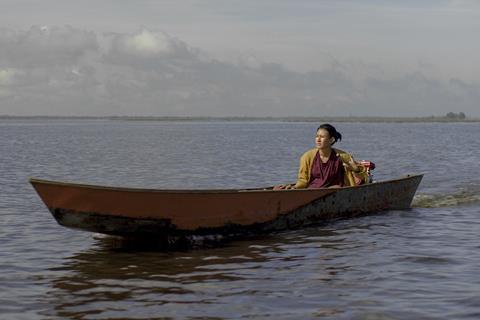Tale of Resilience: The Struggle for Identity in Tale of the Land
The cinematic landscape often serves as a mirror reflecting the socio-political realities of our time, and Indonesian director Loeloe Hendra’s debut film Tale of the Land is no exception. Premiered at the Busan International Film Festival, this poignant narrative tackles the ongoing battle for Indigenous lands in Borneo through the intimate lens of its central character, May. This raw and emotional tale of loss and exile opens a window to the changing tides faced by Indigenous people amidst exploitation and natural change.
 Exploring themes of identity and resilience in Borneo’s lush landscapes.
Exploring themes of identity and resilience in Borneo’s lush landscapes.
The Heart of the Story
May (played with haunting vulnerability by Shenina Cinnamon) is a young woman living in a floating house with her grandfather, Tuha (Arswendy Bening Swara). This house is more than just their home; it is a symbol of their fragile existence, drifting on the waters that cradle their memories and ancestral ties. The narrative unfolds slowly, allowing the audience to breathe in the intricate nuances of their life, as the tranquil yet oppressive atmosphere mirrors May’s emotional struggles. The juxtaposition of land and water creates a palpable tension, raising questions about belonging, safety, and the threats posed by a changing world.
“Will our house sink?” asks an anxious May, echoing her fears not just about their physical dwelling but about their very existence as custodians of ancestral lands giving way to modern development.
The cinematography by Fahrul Tri Hikmawan captures the desolation and beauty of their world, employing a muted color palette that reflects the challenges faced by the characters. The water, both a lifeline and a barrier, becomes a character in itself, shadowing May’s journey as she grapples with her fears of stepping off the floating sanctuary into a hostile land.
Themes of Control and Isolation
As the story progresses, the relationship dynamics come into sharper focus. Tuha, while protective, embodies a controlling nature that hinders May’s growth—the very figure she depends on instills both safety and fear. The gradual revelation of family history and the looming presence of a local mining enterprise throw a veil of anxiety over May’s life, transforming the landscape into one fraught with danger. The environment, laden with looming threats, reflects the struggles faced by Indigenous communities in real life, highlighting the tensions between modernity and tradition.
 The intricate interplay of control and freedom in personal struggles.
The intricate interplay of control and freedom in personal struggles.
May’s decision to reach out to an injured water buffalo becomes a pivotal moment in the film, leading to her first real encounter with the world beyond her floating home. This act of compassion leads to the introduction of Kai (Mohammad Syabir) and his friends, who serve as a bridge to the lands May fears yet is drawn to. The film draws parallels to works like Where the Crawdads Sing, as May’s evolving relationship with nature and community emphasizes the foundations of her identity.
Cultural Resonance and Cinematic Language
While Tale of the Land operates with a sometimes elusive narrative style, the emotional through-line is undeniably clear. The screenplay masterfully interweaves May’s fragmentary memories with larger cultural themes, illustrating the pressures exerted upon her by both her family and societal expectations. The use of dreamlike sequences adds a layer of depth, allowing for a fantastical exploration of her heritage—a tribute to the rituals and traditions of her people that simultaneously embrace and confront adversity.
Production designer Digit D. Pratama deserves a special mention; the floating house serves as an arresting visual metaphor—simultaneously a refuge and a prison. It physically embodies the precariousness of May’s situation and her struggle for independence. As the narrative unfolds, viewers are left with a compelling question: Will May find the courage to embrace her fears and reclaim her identity amidst the chaos?
 Delving into the rich fabric of culture and identity.
Delving into the rich fabric of culture and identity.
Closing Thoughts
In a time when Indigenous rights and environmental concerns are increasingly at the forefront, Tale of the Land delivers a heartfelt and haunting exploration of the struggle for identity against a backdrop of societal change. Loeloe Hendra has crafted a story that demands to be seen and felt, resonating with those who understand the importance of land, heritage, and the fight against erasure.
As the film navigates complex relationships and turbulent territories, it ultimately leaves the audience with an inspiring message: that strength can be found in vulnerability, and that one’s roots, no matter how tumultuous the circumstances, can guide them home.
Tags: Indonesia, Indigenous Lands, Film Review, Cinema, Busan Festival
Article Sources: More information can be found at Mathrubhumi and other sources.














